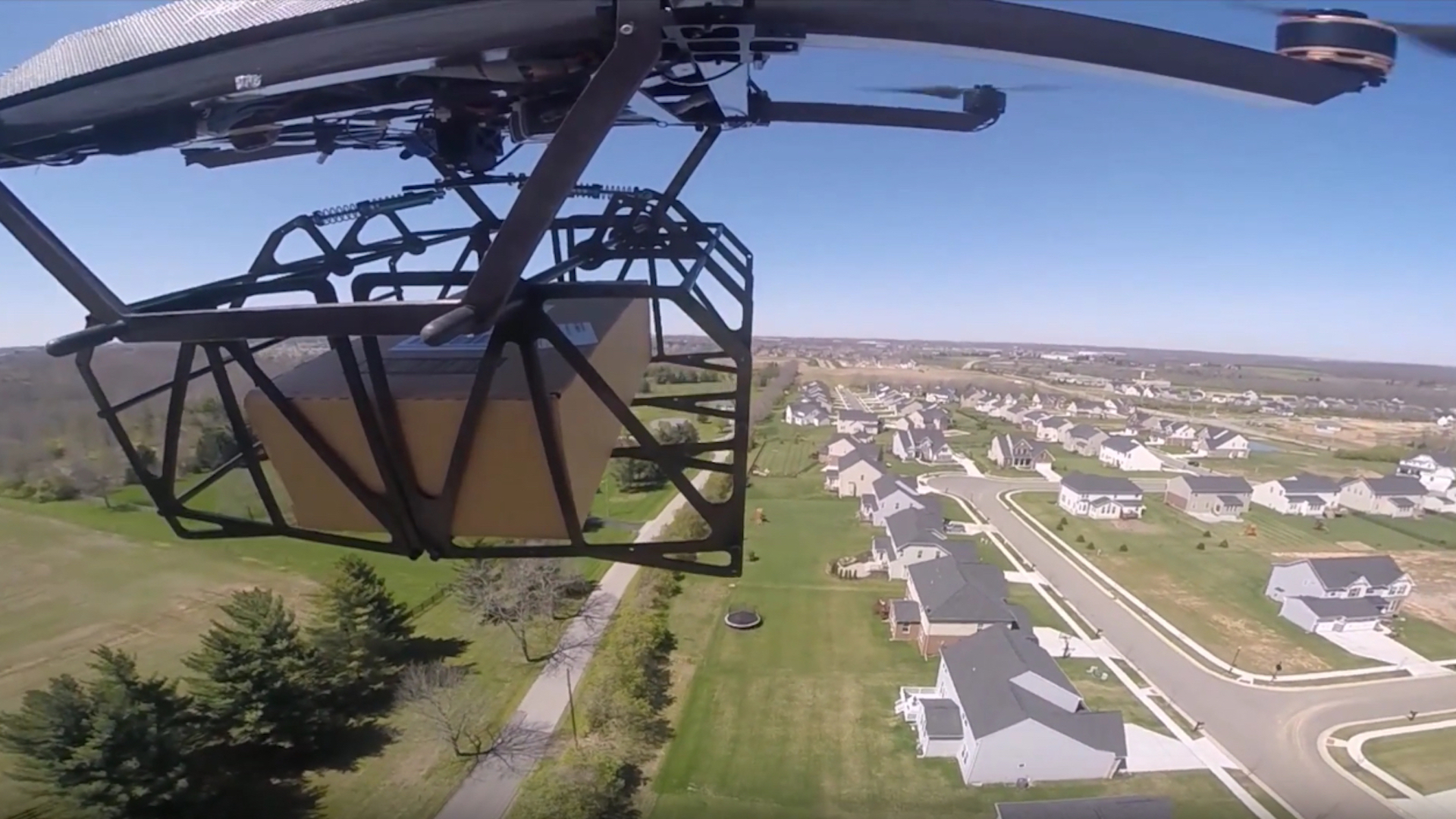

The Trump administration’s UAS Integration Pilot Program just keeps growing. According to a press release from Workhorse Group, the drone tech company has begun aerially delivering packages to citizens of Loveland, Ohio, abiding by rules outlined by the city government and Federal Aviation Administration.
The nascent UAS pilot program, of course, was recently expanded to 10 additional companies and territories across the U.S. In general, the purpose of this legislative endeavor is to gather as much data as possible concerning unmanned traffic scenarios and use cases that range from package delivery to insect monitoring. The idea is to learn how to implement UAVs nationwide first, before actually instating the laws and restrictions needed for increased drone traffic nationwide.
What that means for residents of Loveland who opted into Workhorse’s test program is the ability to use the Workhorse Ares Drone Package Delivery App to have orders delivered aerially from a number of retailers.
To be clear, Workhorse isn’t just deploying package drones from warehouses or dedicated launch hubs. This is a last-mile delivery system that’s part of a two-legged approach using Workhorse delivery vehicles on the ground and drones atop them. Trucks cover long distances, while the drones whirr off locally and return to their truck-hubs.
Workhorse hopes that its system will be the most efficient, cost-effective delivery model in the industry.
“We feel this is a game-changing moment to innovate the way packages are delivered for many years to come,” said Workhorse CEO Steve Burns. “By not only reducing the expense of last mile delivery, but also providing the customer with the ability to opt-in, visualize, and confirm their package delivery on their property, we have re-imagined home delivery.”
The company’s HorseFly drone has a maximum speed of 50 mph, and is capable of carrying a 10-pound payload for up to 30 minutes. The octocopter uses autonomous GPS tracking and infrared cameras to land.
A remote observer monitors the drone’s camera feed before the drone drops its payload at a delivery destination. That way a human eye can confirm whether or not the UAV is in the correct location and appropriate part of the property before dropping a package off. Should anything be off, the remote observer can easily maneuver the UAV into place.
Fortunately, the last-mile delivery model doesn’t require beyond visual line-of-sight (BVLOS) restrictions to be broken or loosened, as the nearby Workhorse truck driver is always within range of the UAV.
With the Workhorse app, users can choose their preferred delivery spot by tapping an area on the app’s map, check the delivery status through its various stages, and even request that the UAV take and send a photograph of the package upon delivery completion.
Workhorse partnered with UPS last year to test this system in Lithia, Florida.